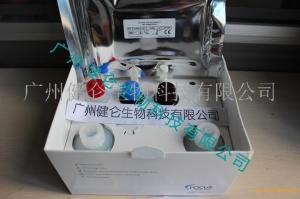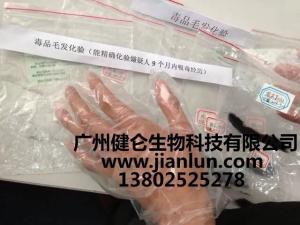


|



| 产地 | 英国进口 |
| 品牌 | 英国 |
| 货号 | |
| 保存条件 | 2-8℃ |
| 英文名称 | UK imports 2ml fever negative control |
| 保质期 | 2年个月 |
产品规格
5ml/瓶
保质期:2年
| 染色菌悬液 | |
| 染色菌悬液包装为5ml/小瓶 | |
| 中文名称及用途 | 英文名称 |
| 布鲁氏菌 | Brucella |
| 热病抗原的染色菌悬液,用于检测、鉴定和定量血清中的布鲁氏菌特异性抗体 | |
| 流产布鲁氏菌 | Brucella abortus |
| 羊种布鲁氏菌 | Brucella melitensis |
| 热病阴性对照(2ml) | Febrile Negative Control (2ml) |
| 可与所有的染色菌悬液配合使用 | |
| 变形杆菌 | Proteus |
| 热病抗原染色菌悬液,用于检测、鉴定和量化血清中的立克次体抗体(某些变形菌与某些立克次体共用一部分抗原) | |
| 变形杆菌OX2 | Proteus OX2 |
| 变形杆菌OX19 | Proteus OX19 |
| 变形杆菌OXK | Proteus OXK |
| 热病阴性对照(2ml) | Febrile Negative Control (2ml) |
| 可与所有的染色菌悬液配合使用 | |
| 沙门氏菌 | Salmonella |
| 热病抗原的染色菌悬液,用于检测、鉴定和量化血清中的沙门氏菌特异性抗体 | |
| 肠炎沙门氏菌H(g,m) | Salmonella Enteritidis H (g,m) |
| 新港沙门氏菌H sp(e,h) | Salmonella Newport H sp (e,h) |
| 沙门氏菌(1,2,5) | Salmonella non-sp. (1,2,5) |
| 副伤寒沙门氏菌 A-H (a) | Salmonella Paratyphi A-H (a) |
| 副伤寒沙门氏菌 A-O (1,2,12) | Salmonella Paratyphi A-O (1,2,12) |
| 副伤寒沙门氏菌 B-H (b) | Salmonella Paratyphi B-H (b) |
| 副伤寒沙门氏菌 B-O (1,4,5,12) | Salmonella Paratyphi B-O (1,4,5,12) |
| 副伤寒沙门氏菌 C-H ( c ) | Salmonella Paratyphi C-H ( c ) |
| 伤寒沙门氏菌 H (d) | Salmonella Typhi H (d) |
| 伤寒沙门氏菌 O (D群) (9,12) | Salmonella Typhi O (Group D) (9,12) |
| 伤寒沙门氏菌 Vi | Salmonella Typhi Vi |
| 鼠伤寒沙门氏菌H (i) | Salmonella Typhimurium H (i) |
| 热病阴性对照(2ml) | Febrile Negative Control (2ml) |
| 可与所有的染色菌悬液配合使用 | |
| 热病阳性对照(2ml) | Febrile Positive Control (2ml) |
| 与a,b,c,d群沙门氏菌染色菌悬液配合使用 | |
| 伤寒沙门氏菌 Vi标准抗血清 | Salmonella Typhi Vi Standard Serum |
| 与伤寒沙门氏菌Vi染色菌悬液配合使用对凝集检测进行标准化。冻干管,重新溶至4ml。 |


微生物染色的基本原理,是借助物理因素和化学因素的作用而进行的。物理因素如细胞及细胞物质对染料的毛细现象、渗透、吸附作用等。化学因素则是根据细胞物质和染料的不同性质而发生地各种化学反应。酸性物质对于碱性染料较易吸附,且吸附作用稳固;同样,碱性物质对酸性染料较易于吸附。如酸性物质细胞核对于碱性染料就有化学亲和力,易于吸附。但是,要使酸性物质染上酸性材料,必须把它们的物理形式加以改变(如改变pH值),才利于吸附作用的发生。相反,碱性物质(如细胞质)通常仅能染上酸性染料,若把它们变为适宜的物理形式,也同样能与碱性染料发生吸附作用。
细菌的等电点较低,pH值大约在2—5之间,故在中性、碱性或弱酸性溶液中,菌体蛋白质电离后带阴电荷;而碱性染料电离时染料离子带阳电。因此,带阴电的细菌常和带阳电的碱性染料进行结合。所以,在细菌学上常用碱性染料进行染色。
The basic principle of microbial dyeing is based on the role of physical and chemical factors. Physical factors such as the capillary phenomenon, penetration, and adsorption of cells and cell matter to dyes. Chemical factors are based on various chemical reactions that occur with the different properties of cell materials and dyes. Acidic substances are more easily adsorbed to basic dyes, and the adsorption is stable; similarly, alkaline substances are more likely to adsorb acid dyes. For example, acidic nuclei have a chemical affinity for basic dyes and are easily adsorbed. However, if acidic materials are to be stained with acidic materials, their physical form must be changed (such as changing the pH) to facilitate the adsorption. In contrast, alkaline substances (such as cytoplasm) are usually only stained with acid dyes. If they are changed into suitable physical forms, they can also be adsorbed with basic dyes.
The isoelectric point of the bacteria is low, and the pH is approximately between 2 and 5, so in the neutral, alkaline, or weakly acidic solution, the bacterial protein is ionized and negatively charged; and when the basic dye is ionized, the dye ion is positively charged. . Therefore, the negatively charged bacteria are often combined with a positively charged basic dye. Therefore, basic dyes are commonly used for bacteriological staining.